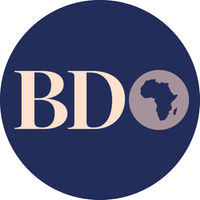SUMMARY
- Digital advertising spending grew by 15 percent in the first half of 2021, compared to a similar period last year.
- The report commissioned by the International School of Marketing (ISA), a professional school that offers marketing and brand communications training in East Africa, shows that ad spending grew from Sh52.2 billion to Sh60.3 billion.
Digital advertising spending grew by 15 percent in the first half of 2021, compared to a similar period last year, a new report shows, as the sector rebounded from economic setbacks caused by the Covid-19.
The report commissioned by the International School of Marketing (ISA), a professional school that offers marketing and brand communications training in East Africa, shows that ad spending grew from Sh52.2 billion to Sh60.3 billion, representing a growth of Sh8.1 billion in the period.
An increase in Out of home (OOH) and print advertising expenditures, which rose by 27 percent and nine percent respectively, boosted the growth.
The challenges posed by the coronavirus that hit companies in the telecommunication, hospitality and travel sectors had an instant impact on firms’ earnings, forcing them to cut advertising budgets in 2020 in order to stay afloat.
The lifting of lockdown measures such as ban on local and international flights, cessation of movements in selected counties as well as a dusk to dawn curfew, helped the industries recover, lifting promotion expenditure.
“Advertising expenditure in H1 2021 decreased by 4.4 percent compared to the previous half year (H2 2020) but increased by 15 percent compared to H1 2020,” says The Kenya Media Scene (H1 2021) report, which was done from March to June 2021 and sampled 2,500 respondents, says.
“Most firms strategically reduced their advertising budgets to observe Covid-19 trends especially after the government’s warning of the possible 3rd and 4th wave,”
Ad spending, however, was dominated by big corporations such as Safaricom, Kenya Commercial Bank and the East Africa Breweries Limited (EABL).
“Increase in Ad spends by various sector players such as alcoholic beverages have been witnessed. Case in point, EABL’s high exposure of its products on both large and small format assets in the OOH space was the reason for the high expenditure on OOH,” the report says.
“Safaricom with its Safaricom @20 promotional campaigns and top tier banks like KCB were also among the top spenders in the outdoor space.”
The report also shows that the betting and gambling industry recorded a 74 percent growth in ad spending compared to the previous year followed by agriculture (46 percent), beverages (39 percent), personal care (eight percent) and foods (six percent).
”State Bodies (MOH) and Health Care & Institutions were the biggest losers this period, having posted a 69 percent and 82 percent drop in spends respectively in H1 2021 compared to the same period last year,” it adds.
However, the report notes that despite Safaricom being one of the top spenders in H1 2021 because of their promotional campaigns, it still reported a 22 percent drop in ad spends that contributed to the overall decrease in expenditure compared to H2 2020.
“Ad spend for the year 2021 is expected to rise by 18 percent by the end of 2021 compared to the previous year. Being an election year, Ad spends in 2022 are likely to be boosted further by political spending,” Enock Mokaya, ReelAnalytics senior researcher says.
The report also notes that advertisers are likely to capture consumer attention through social networks (65 percent), billboards (39 percent), online videos (36 percent) and websites (29 percent).
The least being posters (16 percent), on buses (17 percent), music streaming services (23 percent) and radio (25 percent).
“Quencher, KBC and Broadways were some of the brands that the consumers felt had an old taste, look or feel despite some of their rebranding efforts,” it says.



No comments:
Post a Comment